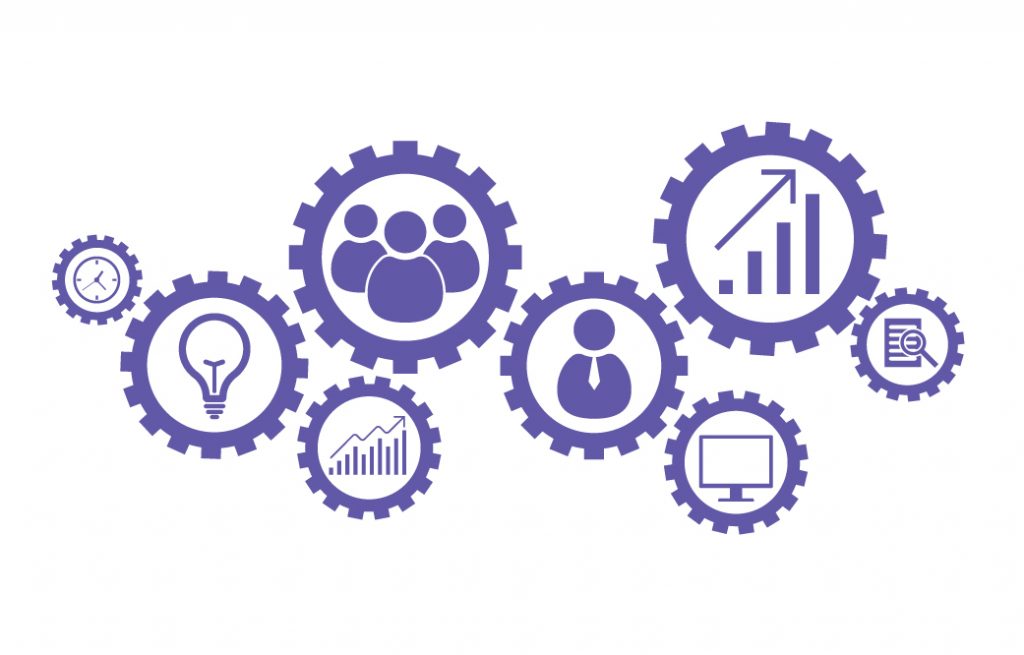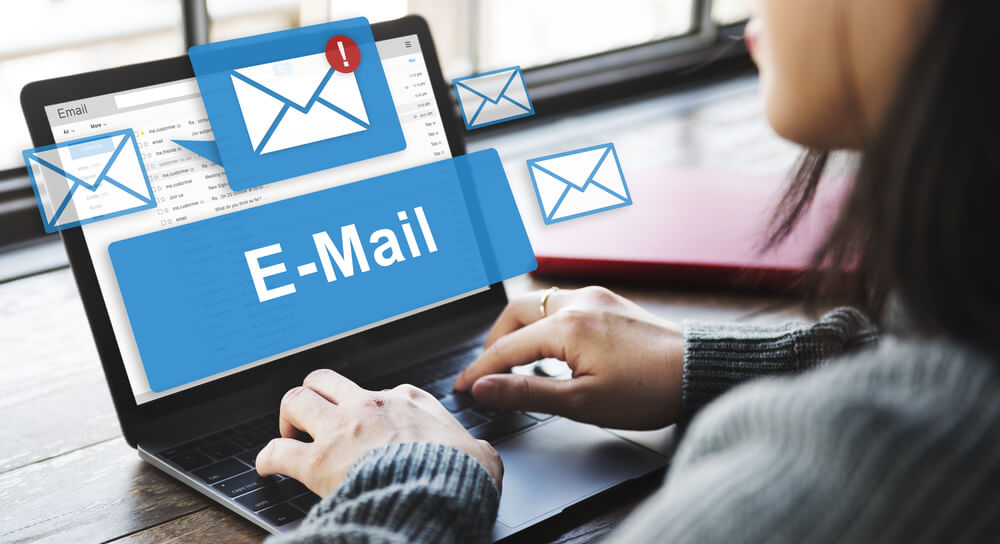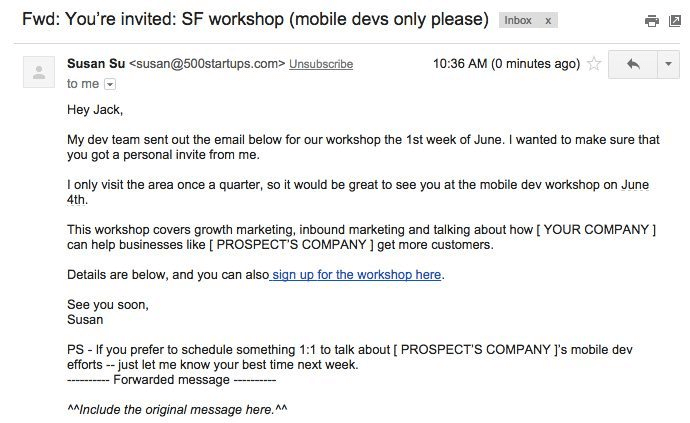Email Is Not Dead – Email Marketing Can Help Grow Your Sales
By Patricia Kopec
Email marketing should be one of your biggest priorities when it comes to your marketing strategy.
We often hear, “Email marketing doesn’t work” or “I don’t read my emails”. However, after working with hundreds of clients, we continue to see that email marketing works — when done properly.
Don’t believe me? Let’s see what SalesForce has to say:
Email marketing has an average ROI of 3,800 percent. For every dollar invested, the average return is $38. (Salesforce)
In order to see results from your email marketing, there needs to be a strategy put in place. This is particularly important as technology continues to evolve.
What Makes A Good Email Marketing Strategy?
1) Email Personalization
Personalization is not a nice to have, customers expect it.
Personalization allows businesses to connect with their clients and prospects on a deeper level. As Dale Carnegie says, “A person’s name is to him or her the sweetest and most important sound in any language.”
By using a specific personal name, rather than a general email address or a company’s name,
you can increase open rates and click-through rates by as much as 35%. (SuperOffice)
The majority of major email marketing platforms and CRMs such as MailChimp, InfusionSoft, HubSpot, and SalesForce have personalization tools built in to assist you.
Expert Tip: In order to use email personalization effectively, it is vital that you have a clean email list.
What is a clean email list?
Ensure you have all the data you need from your customers like first name, last name, city, etc. Make sure the information is accurate and spelled correctly, and make sure that it is CASL compliant. This data should be in the same format and available for all of your customers.
Start with a plan and ask yourself:
- What can you personalize in the email and where?
- What information do you need (name, city, budget, goals, etc)?
- Do the forms on your website ask for all of the right information and are they all consistent?
2) Email List Segmentation
According to MailChimp’s latest data, segmented email marketing campaigns get 59.99% more clicks and 14.64% more email opens compared to non-segmented campaigns. What is email list segmentation?
“Segmentation is the division of email subscribers into smaller segments based on set criteria. Typically, segmentation is used as a personalization tactic to deliver more relevant email marketing to subscribers based on their geographic location, interests, purchase history, and much more.” – Campaign Monitor
You want to ensure you are sending customers and prospects the right information, at the right time. Email marketing works best when your customers receive the information they want to see. Blasting the same email to everyone doesn’t work effectively anymore — the information needs to be relevant to your audience.
The end goal of any email is to get a customer or prospect to your website to convert, whether that be through a sale or by contacting you.
You can segment your customers by city, size of purchase, type of purchase, job title, or other demographics. In order to do this, you are going to require an email service provider or CRM that allows you to segment your list. For example:
- MailChimp
- Sharp Spring
- HubSpot
- Constant Contact
- ActiveCampaign
Giving your customers the right information at the right time means that you are delivering an experience, product, or service that is right for them, and this will allow you to increase your sales.
3) Email Automation
“Email automation is the ability to send time or action triggered emails to subscribers with relevant information. Automation is useful for a variety of different marketing purposes. Whether it’s a triggered workflow that helps nurture new leads, birthday greetings that add a personal touch, or automated blog updates that take the legwork out of staying in touch with your audience.” – Campaign Monitor
The magic of email automation is that you set it up once and then it automatically sends without you having to think about it. Email automation helps to make you and your business more efficient and it allows you to make money or generate leads as you sleep!
Email automation allows you to:
- Send the right content at the right time.
- Send timely and pertinent information to respond to your customers and prospects needs.
- Assist in nurturing clients and prospects through the buying cycle.
- Create a higher level of customer service, which helps to deepen relationships.
Email automation requires work and planning up front. It’s important that you take the time to map your your buyer journey so that you can clearly see what information they will need at each point in time.
You will also need to consider what the trigger will be for the email automation to start. For example:
- Are they a new subscriber to your email list?
- Did they fill out a form on your website?
- Did they change statuses in your CRM?
For example: If someone is a new subscriber to your email, you can set up an automated welcome email.
Welcome emails have on average 4 times the open rate and 5 times the click-through rate of a standard email marketing campaign. (InboxArmy)
If you would like an automated system that is delivering you leads, then email automation and trigger-based emails are the way to go.
4) Design and Format of Your Email
The next thing to consider is what the design and format of email will be. In order to create a successful email marketing campaign, it is important to determine the goal for each email that is sent.
Consider the following:
- Do you want your email to be personal?
- Are you sharing a variety of added value content?
- Do you want to generate leads?
These are all important questions to ask because the answers will help you to determine what design and email format to use.
Types of Emails
Plain Text Emails
If the goal of your email is to create a more personalized experience and you want to build trust with your email list, then plain text emails are the way to go.
Plain text emails are simple. They offer no images, no graphics, and no fancy fonts. They are just as they sound, a plainly written letter. Plain text emails are easy to read and free of distractions — and this is a major reason why they work so well.
Plain text emails work best for:
- Reaching out to a cold audience
- Sales inquiries
- Post-event follow-ups
- The B2B space
- And sometimes with customers, depending on the marketing angle
“In a 2014 survey, we asked over a thousand professionals whether they preferred HTML-based or text-based emails, and whether they preferred emails that consisted of mostly text or mostly images. Nearly 2/3 of the respondents said they preferred HTML and image-based emails.” – Hubspot
Here is an example of a plain text email:
HTML Emails
HTML emails are coded to look nice and can be decorated with images, graphics, and headlines. These kinds of emails work really well if you’re looking to share engaging value-added content to your audiences, such as blogs or resources. They also work well if you’re looking to demonstrate or showcase a product/service or share company updates. HTML emails tend to perform better if you’re a B2C business.
5) Always Send People Back to Your Website
We have seen many business owners send out beautiful emails with great content but they don’t seem to convert because they are not driving people back to their business website.
Your email should be driving your customers and prospects to your website. The key to getting them back to your website is by give your subscribers a small bite of information, but not everything. Your small bite should entice them to click over to your website to learn more.
Once they are on your website, you have the ability to track their behaviour, convert them into leads, or increase sales. Once someone is on your website they have the opportunity to browse, read content, and be lead down the marketing funnel.


